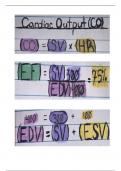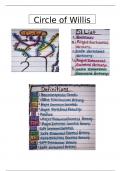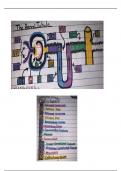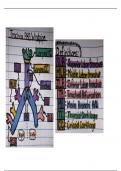Baileybooth
On this page, you find all documents, package deals, and flashcards offered by seller baileybooth.
- 4
- 0
- 1
Community
- Followers
- Following
5 items

Anatomy and Physiology Hand-Written Notes
Cardiac Output Equations: Contains the Cardiac Output equation, The End-Diastolic Volume equation, and the Ejection Factor equation. Circle of Willis: Contains every artery the blood takes from the Heart, to the Brain. Renal Tubule: Contains a drawn diagram of the Renal Tubule and its parts. Trachea: Contains a drawn diagram of the Trachea.
- Package deal
- • 4 items •
- Hand-Drawn Diagram of Trachea Anatomy • Class notes
- Hand-Drawn Diagram of the Renal Tubule • Class notes
- Hand-Drawn Diagram of the Circle of Willis • Class notes
- Cardiac Output Equations • Class notes
Cardiac Output Equations: Contains the Cardiac Output equation, The End-Diastolic Volume equation, and the Ejection Factor equation. Circle of Willis: Contains every artery the blood takes from the Heart, to the Brain. Renal Tubule: Contains a drawn diagram of the Renal Tubule and its parts. Trachea: Contains a drawn diagram of the Trachea.

Hand-Drawn Diagram of the Circle of Willis
The circle of Willis encircles the stalk of the pituitary gland and provides important communications between the blood supply of the forebrain and hindbrain. In this Diagram, you will see the pathways extending from the Heart to the Brain. I have included a list of all the blood vessels the blood goes through. My Professor for my Anatomy and Physiology class (Dr. Meyer) drew this himself on the whiteboard, I just copied it. You will not find a diagram like this anywhere else!
- Package deal
- Class notes
- • 1 pages •
The circle of Willis encircles the stalk of the pituitary gland and provides important communications between the blood supply of the forebrain and hindbrain. In this Diagram, you will see the pathways extending from the Heart to the Brain. I have included a list of all the blood vessels the blood goes through. My Professor for my Anatomy and Physiology class (Dr. Meyer) drew this himself on the whiteboard, I just copied it. You will not find a diagram like this anywhere else!

Hand-Drawn Diagram of the Renal Tubule
The renal tubule collects the products that are filtered out of the blood. Vital water, electrolytes, amino acids, and ions are captured while the excess is eliminated in the urine. Kidney tubules wind through the inner kidney from the cortex to the medulla to produce urine.
- Package deal
- Class notes
- • 1 pages •
The renal tubule collects the products that are filtered out of the blood. Vital water, electrolytes, amino acids, and ions are captured while the excess is eliminated in the urine. Kidney tubules wind through the inner kidney from the cortex to the medulla to produce urine.

Hand-Drawn Diagram of Trachea Anatomy
A hand-drawn diagram labeling the parts of the Trachea (AKA Windpipe).
- Package deal
- Class notes
- • 1 pages •
A hand-drawn diagram labeling the parts of the Trachea (AKA Windpipe).

Cardiac Output Equations
the volumetric flow rate of the heart's pumping output: that is, the volume of blood being pumped by a single ventricle of the heart, per unit time. Stroke Volume (SV) *x* Heart Rate (HR) = Cardiac Output End-Systolic Volume (ESV) *+* Stroke Volume (SV) = End-Diastolic Volume (EDV) Stroke Volume (SV) */* End-Diastolic Volume (EDV) = Ejection Fraction (EF)
- Package deal
- Class notes
- • 1 pages •
the volumetric flow rate of the heart's pumping output: that is, the volume of blood being pumped by a single ventricle of the heart, per unit time. Stroke Volume (SV) *x* Heart Rate (HR) = Cardiac Output End-Systolic Volume (ESV) *+* Stroke Volume (SV) = End-Diastolic Volume (EDV) Stroke Volume (SV) */* End-Diastolic Volume (EDV) = Ejection Fraction (EF)
